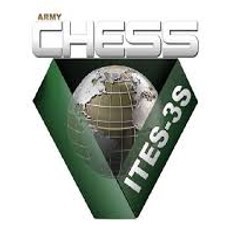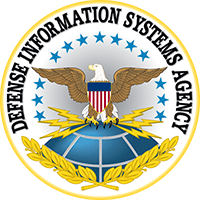Organizations today operate in a complicated, complex, rapidly changing globally competitive business environment. Business processes and supporting business systems need to continually change and adapt to keep pace.
Business processes, however, in many cases evolve informally, ad-hoc and slowly. The result is that many business processes are a tangled web of inefficient work activities, ambiguous policies and legacy procedures that consume resources and impede performance.
These same processes, unfortunately, often provide the source for business systems requirements - requirements that reflect legacy business rules that constrain, rather than improve, business processes.
Getting the “requirements” right is difficult. Most organizations struggle to get the requirements right, regardless of the amount of time and resources expended on the effort. Fortunately, this problem has a clear solution.
This post provides you with a key component of the solution - the five essential business analysis questions that serve as a framework for rapidly conducting much deeper and more sophisticated business analysis.
The 5 Essential Business Analysis Questions
The frame of reference for the five questions, summarized below, is from the perspective of a business analyst talking with various stakeholders associated with the business space within the scope of analysis.
The five questions, however, are not a scripted list to mechanically engage the stakeholders (i.e. “I have 5 questions to ask you”). The five questions represent a framework for critical thinking and engaging stakeholders in a sophisticated conversation.
Applied from this perspective, these five questions will radically change the way you and your team think about and conduct business analysis.
Question #1: “What are you currently doing?”
This question enables you to take the first cut at defining as-is business process and identifying the existing work activities that comprise the business processes, work activity sequence (aka workflows), where (functionally) work activities are performed, who performs the activities and how the activities (associated policies and procedures) are performed.
“What are you currently doing?” is a great starting point for deeper analysis. It provides the lens to talk about business process and business requirements from many different perspectives.
Question #2: “What are you currently doing that is not needed?
- And you would stop doing, if you could change business policies, procedures, processes and/or supporting information technology.
There are numerous work activities (business policies, procedure steps/tasks, business rules, etc.) in most organizations that have low, questionable or no value from a business or customer perspective, but consume significant resource time and effort to perform.
These activities are often legacy in nature (“We have been doing it this way since 1982”), or procedures resulting from in-the-moment overreaction to one-off exceptions (“We’ll ensure that this never happens again.”) or business policies put in place to comply with an internal or regulatory mandate - the mandate, however, is no longer applicable but the business policy and supporting procedures remain.
If the work activity is something that the organization does not need to do - if it doesn’t add real value – don’t waste time improving it – simply eliminate it!
Question #3: "What are you currently doing that you need to continue doing, but can be improved?”
- And you would improve, if you could change business policies, procedures, processes and/or supporting information technology.
This is where we challenge the stakeholders as well as ourselves, as business analysts, to identify opportunities to improve existing work activities.
Asking deeper questions - What can we do from a policy or procedural standpoint to improve the process? What can we do from an information technology perspective to improve the process? Does this thing rise to the level of a functional requirement that we can support through application software?
Question #4: "What are you not doing, that you know you should be doing?
– And you would start doing, if you could change business policies, procedures, processes and/or supporting information technology.”
Most business stakeholders are aware of the things they should be doing that can drive value and improve efficiency, and most of them would like to implement these changes, but they can't. They do not have the right mechanisms (tools, equipment, supplies, etc.), or they are constrained by legacy policies, procedures and supporting technology.
Opportunities associated with question #4 often have cross-enterprise impact and involve new functionally within existing systems and/or new systems. Accordingly, the business case includes cross functional impact analysis.
Question #5: "What are you not doing that you should be doing, but you don’t know that you should be doing?
- And if you knew that you should be doing it, you would start doing, if you could change business policies, procedures, processes and/or supporting information technology.
Question #5 represents forward facing analysis. It’s about identifying the things that an organization is not yet doing, but needs to be doing going forward, but is not yet even aware that they need to do these things now or in the near future.
The application of question #5 moves analysis well beyond the realm of “order-taking” and deeply into the realm of a professional analysis. A professional business analyst can draw out many potential forward facing requirements via facilitated discussions with internal and external business subject matter experts.
Summary
These five questions represent the critical thinking concepts to apply when discussing business requirements with your business subject matter experts.
It's a very complex, globally competitive, rapidly changing business environment. Ask yourself some critical questions. Are the business processes and supporting applications in your organization really keeping pace with ever increasing demands for organizational effectiveness and operational efficiency?
Do your team and your organization have the critical thinking skills and analysis techniques to rapidly identify, analyze and articulate essential business requirements? Are you able to rapidly define and specify your business requirements at the level of detail of functional requirements?
If you can, what are the benefits? If you can’t, what are the risks?
Download an 8-Page In-Depth Whitepaper of the Five Essential Questions
Subscribe to my blog | Visit our Knowledge Hub
Visit my YouTube channel | Connect with me on LinkedIn
Check out our Business Analysis Training Courses and Consulting Services




















